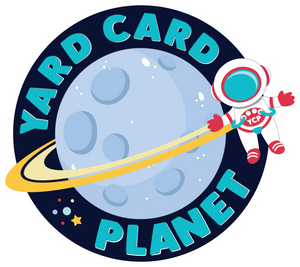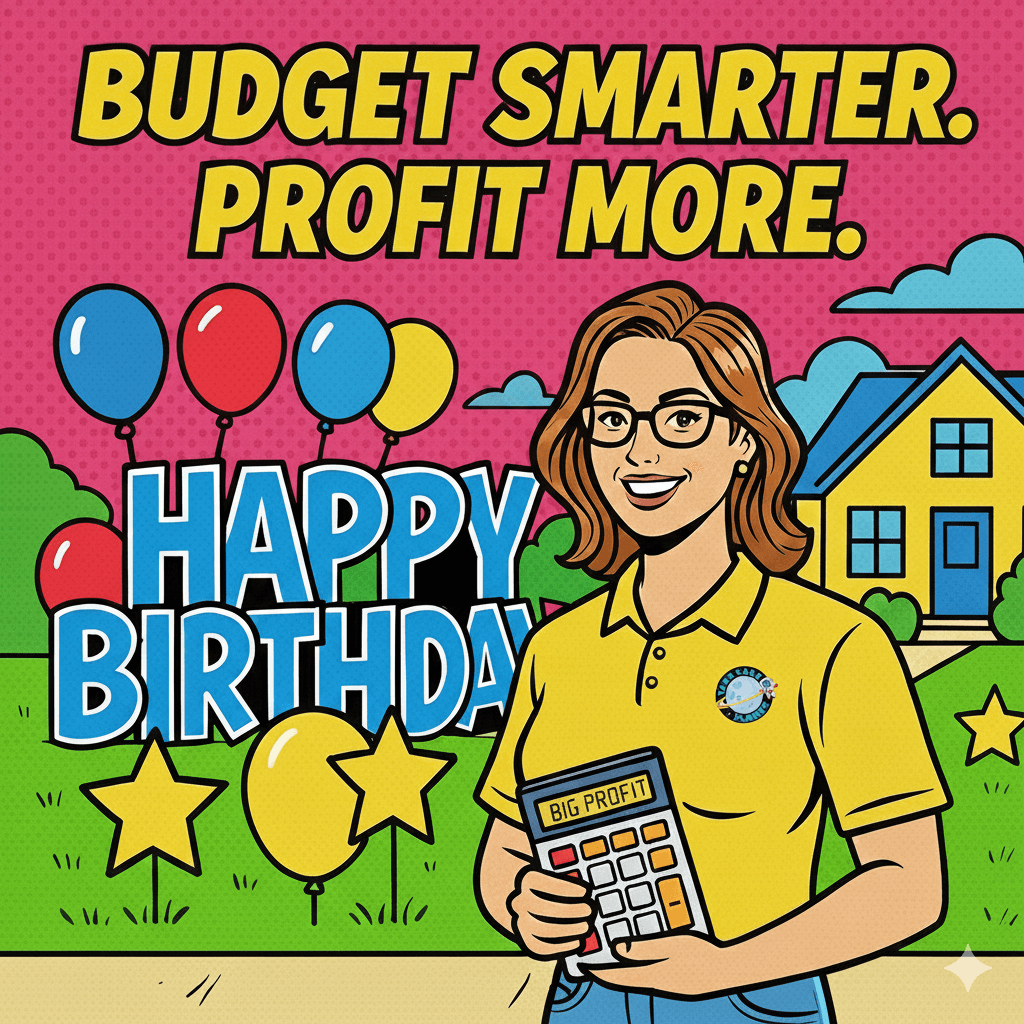Running a yard card business is one of the most rewarding ways to turn creativity into income. You make people smile, celebrate milestones, and get paid to do it. But to stay profitable and grow, you must know when to spend, when to save, and how to keep your money working for you.
This guide breaks down everything yard carders need to know about budgeting including startup costs, ongoing expenses, reinvestment strategies, marketing, and the hidden costs you might not think about.
It also includes the Yard Card Planet Profit Calculator, built specifically for yard card professionals, to help you estimate revenue, expenses, and monthly reinvestment, all based on real-world yard carding numbers.
Why Budgeting Matters for Yard Carders
The most successful yard carders don’t guess where their money goes, they track it. They know what to invest in, what to hold off on, and how to stay profitable through every season.
A smart budget helps you:
-
Control expenses and grow sustainably
-
Avoid running out of supplies mid-season
-
Handle slow months without stress
-
Know exactly how much profit you’re keeping
-
Decide when to invest in new yard card sets or alphabet sets
If you want to run a business that lasts, budgeting isn’t optional, it’s your roadmap to profit.
Startup Costs: What You’ll Need to Begin
Most yard card businesses can launch for under $2,500 with the right planning. Here’s a realistic example of where your startup money should go.
| Expense | Estimated Cost | Notes |
|---|---|---|
| Starter Sets | $1,000 | Give you the essentials to get your business up and running |
| Alphabet, Numbers & Symbols Sets | $300 | Needed for custom names, ages, and messages |
| Additional Themed Sets | $250 | Add variety beyond your starter sets (birthday, baby, sports, holidays) |
| Tools & Stakes | $150 | Tape, stakes, zip ties, mallet, storage bins |
| Website or Booking Setup | $150 | Optional, but helps automate your bookings |
| Phone Line or Dedicated Number | $40 | Keeps business calls separate |
| Storage Bins or Organization System | $120 | Store, protect, and organize your inventory |
| Branding (logo, business signs, business cards, magnets) | $250 | Professional branding adds trust and credibility |
| Contingency | $150 | Keep some cash for unplanned expenses |
Startup Total: Around $2,410
Pro Tip: Don’t overbuy before you know your market. Start with the basics, then use your profits to grow your inventory.
Monthly Budget: What to Spend and When to Save
Once your business is running, your monthly expenses fall into two categories: fixed costs and variable costs.
Fixed Costs (the bills that stay about the same)
-
Storage unit (optional if you store at home)
-
Phone plan or business line
-
Website or booking tool
-
Marketing and ads
-
Insurance (optional, depending on your state)
-
Miscellaneous expenses (repairs, replacements, cleaning supplies)
Variable Costs (the expenses that change each month)
-
Gas and travel mileage
-
Stakes, tape, and setup materials
-
Replacements or repairs
-
Weather-related damage or wear
-
New yard card sets purchases
A healthy rule of thumb:
Reinvest 20% of your monthly profit into new sets and designs. Yard Card Planet adds fresh collections year-round, so staying updated helps you attract repeat customers and book faster.
Marketing Your Yard Card Business
Marketing isn’t an expense, it’s an investment. The right exposure brings in bookings that more than pay for themselves.
Here’s how to market smart while staying within budget.
1. Facebook and Instagram Ads
Create simple ads showing your best setups and target local neighborhoods, schools, and community groups.
-
Budget: $100–$250 per month, depending on the season.
-
Increase spending before peak times like graduations, holidays, and back-to-school.
-
Always use location targeting (5–10 miles around your service area).
2. Local Neighborhood Magazines or Community Mailers
Affordable print ads in local publications work well for family-centered services.
-
Most cost under $100–$150 per month.
-
Use bold photos and include your phone number or QR code for easy contact.
3. Google Business Profile
Set it up free and upload photos weekly. Reviews and fresh content help you appear in “Yard Cards Near Me” searches.
4. Referrals and Repeat Clients
Encourage customers to share your displays on social media and tag your business. Offer small referral discounts for repeat bookings.
Budget Tip: Treat marketing like a non-negotiable monthly expense. $100–$250 is a good baseline — more in busy months, less in slower ones. The goal is consistency, not short bursts.
The Yard Card Planet Profit Calculator
Here’s where budgeting gets easy. Use the Yard Card Planet Profit Calculator below to see exactly how your numbers play out.
This tool was built exclusively for yard card professionals to help you calculate revenue, expenses, profit, and how much to reinvest into new products and supplies each month.
Example: Profit Breakdown
If you average 7 installs per week at $100 each, here’s how your monthly numbers look:
Revenue: $3,000
Variable Costs (fuel, supplies): $450
Fixed Costs (marketing, phone, etc.): $240
Net Profit: $2,310
Reinvestment (20%): $600 toward new yard card sets and supplies
That reinvestment keeps your displays fresh, helps you compete locally, and keeps customers coming back for new looks.
Final Thoughts
Budgeting isn’t about cutting corners. It’s about building a strong business foundation so your profits can grow each season.
Use the Yard Card Planet Profit Calculator above to plan your numbers. Then stock up on essentials that keep your calendar full:
Smart budgeting + consistent marketing + fresh inventory = a thriving Yard Card business.

